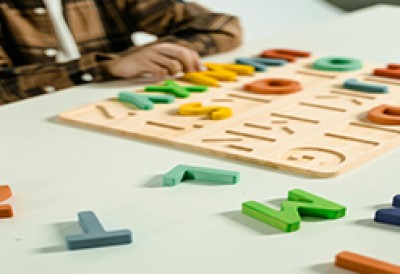Language and literacy experiences for preschoolers aged 3 to 5 are all about sparking curiosity, building confidence, and laying the foundation for lifelong communication. Here’s a mix of engaging, developmentally appropriate ideas you can weave into your program.
Everyday Language & Literacy Experiences
- Storytelling Circles: Invite children to co-create stories using props or picture cards. This builds narrative skills and imagination.
- Name Recognition Games: Use name puzzles, magnetic letters, or “find your name” scavenger hunts to support early print awareness.
- Environmental Print Walks: Explore signs, labels, and logos in the environment—perfect for connecting print to meaning.
- Role Play & Dramatic Play: Set up a post office, doctor’s clinic, or café with menus, signs, and notepads to encourage purposeful writing and rich vocabulary.
Songs, Rhymes & Phonological Play
- Syllable Clapping: Clap out names or objects (e.g., “ba-na-na”) to build phonological awareness.
- Rhyme Time: Use fingerplays and rhyming books like Hairy Maclary or Room on the Broom to develop sound patterns.
- Sound Hunts: Go on a hunt for things that start with a certain sound—great for tuning into initial phonemes.
Early Writing Invitations
- Mark-Making Stations: Offer crayons, chalk, paintbrushes, and sand trays to explore pre-writing strokes.
- Letter Formation with Loose Parts: Use pebbles, sticks, or buttons to form letters—great for fine motor and letter recognition.
- Message Centre: Set up a space where children can “write” letters, cards, or signs for their peers or families.
Book-Based Experiences
- Interactive Read-Alouds: Pause to ask questions, predict outcomes, or act out parts of the story.
- Book-Making Projects: Children create their own books with drawings and dictated text—perfect for linking oral language to print.
- Story Retelling Baskets: Fill baskets with props related to a familiar story to encourage retelling and sequencing.
Language-Rich Play Ideas
- Puppet Conversations: Use puppets to model turn-taking, expressive language, and storytelling. Children can create their own characters and voices.
- “What’s in the Bag?” Game: Fill a bag with mystery items. Children describe what they feel before revealing it—great for vocabulary and descriptive language.
- Emotion Charades: Act out feelings like “excited,” “nervous,” or “proud” and have children guess. This builds emotional vocabulary and empathy.
Creative Expression & Writing
- Alphabet Collage: Assign a letter and let children cut out pictures from magazines that start with that sound.
- Speech Bubbles: Add speech bubbles to photos of children at play and ask them what their character might be saying.
- Label the Room: Invite children to help label classroom objects with sticky notes—boosts print awareness and ownership.
Culturally Responsive Literacy
- Multilingual Storytime: Invite families to share stories or songs in their home language.
- Family Photo Books: Create books with photos and captions about each child’s family—children “read” and retell their own stories.
- Traditional Tales & Folktales: Explore stories from different cultures and act them out with props or shadow puppets.
Literacy Through Inquiry
- Question of the Day: Pose a daily question (e.g., “What would you do if it rained marshmallows?”) and record children’s responses.
- Word Walls: Build a wall of high-interest words based on current projects or children’s interests.
- Literacy in STEM: Add clipboards and pencils to block play or science areas for children to “record” their discoveries.
Further Reading
Children's Learning Through Literacy
Creating A Literacy-Rich Environment For Children
Literacy Activities For Children In Early Childhood
